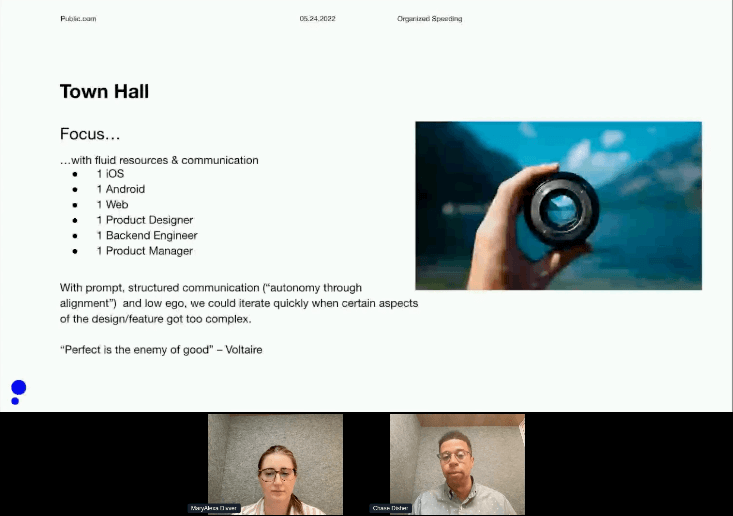Whether there is too much or too little data, inefficient processes, or lack of alignment between teams, it’s easy to get bogged down in the product world these days. This is why we have seen the rapid growth of “product operations”. They are the new kid on the block as product teams worldwide strive to build excellent products effectively.
Processes — inefficient or otherwise — are at the heart of every business. As defined by Gartner, a business process coordinates the behaviour of people, systems, information, and things to produce business outcomes in support of a business strategy. The greater understanding of what these processes are, how they work, and what impact they have, the easier it will be for a product operations team to help scale and improve your business.
But how do you do it? Where do you start? Taking a process-led approach within product operations could be the answer — this article explores the concepts of mapping, maturing, and automating business processes in the exciting world of product.
So let’s jump right in…!
What is process mapping?
A process-led approach starts with the concept called ‘process mapping’. It’s the best way to visually represent your business processes by drawing out all of the steps and tasks involved. Regardless of the level of detail you go into, this is a great foundational activity that product operations teams around the world can do to help get a better understanding of how your business operates, identify opportunities for improvement, and help make your business run more efficiently. These maps (or diagrams) can be used for a variety of reasons, such as supporting business accreditations, process awareness, training new employees, business transformation, and much more.
Using swimlanes (which are used to represent different steps across different lanes depending on who is responsible for them) or suppliers, inputs, process, outputs, and customers (SIPOC) are just two examples of process maps I have personally utilized at Blue Prism. There are also several tools you can use for process mapping depending on your needs or the complexity of the process, from a simple Word document to an Excel spreadsheet, to a dedicated tool like Lucidspark, Process Street, or MS Visio.
Here are some examples of process mapping that involve product teams:
- An optimal product organization process for meeting its goals.
- A product manager’s process specifically for creating and updating their product roadmaps.
- A project manager’s process specifically for planning and managing a product launch.
- A support team member’s process specifically for prioritizing and addressing support tickets.
- A process analyst’s process at keystroke level, which includes the rules and decisions and the process inputs and outputs.
By shining a light on waste, streamlining work processes, and building understanding across multiple teams, process mapping has its benefits. Avoidable errors can be reduced by ensuring consistency and keeping everyone on the same page. Silos can be eliminated across your product teams by improving communication between individuals engaged in the same process. Processes can be analyzed to determine how they could be improved and optimized. And an up-to-date record of all live business operations can be kept in a central location—think of it as a “single source of truth”— which will help drive consistency and efficiency for your product teams.
What is process maturity?
The next stage of the process-led approach to consider is “process maturity”. Process maturity, and process maturity models, is not a new concept. It dates back to the late 1980s/ early 1990s when the Software Engineering Institute developed what is now known as the Capability Maturity Model (CMM). Its general structure contains five levels and can be summarized as follows:
- Level one – Initial (people do tasks ad-hoc).
- Level two – Repeatable (the process is repeatable)
- Level three – Defined (the process is the standardized way of doing things).
- Level four – Managed (people are managed through the process).
- Level five – Optimizing (making the process work as best as it can).
It was originally intended as a tool to evaluate the ability of government contractors to perform a contracted software project. But since then, many adaptations and variations have been developed (I’ve come across at least ten!). These days, maturity models can be viewed as a set of structured levels that describe how well the behaviours, practices, and processes of an organization can reliably and sustainably produce required outcomes.
Think of it as a benchmark for comparison that can be used to assess the current effectiveness of a business and figure out what you should focus on next in order to improve performance. Most maturity models I have come across assess (qualitatively) people, processes, and technologies. I have also seen ones that add in two additional factors, namely strategy and controls. Whatever you decide to use, it’s important to find something that makes sense in the context of your own business and can actually be used and applied effectively.
For me, you will want to utilize something that will ultimately help to drive process adoption and continuous improvement in your business. One good example I will call out is the Agile ISO Maturity Model, which is geared to use the tools of agile business process management to attain ISO-level standards. It involves five stages:
- Documented Processes – start off by making sure your core processes have been identified, mapped, and documented.
- Followed Processes – next, make sure your processes are put into action by focusing on process implementation, adoption, and adherence.
- Managed Processes – focus on data and how it can be used to monitor, measure, and analyze your processes.
- Optimized Processes – leverage data and feedback to help drive large or incremental improvements (this is where process automation might kick in – more on this later!).
- Integrated Processes – finally, once the core processes have been systematized and are in the evolution of continuous improvement, you can begin to develop new/ supplementary processes that link different stakeholders across product or even the wider business.
In an ever-changing world, process maturity is all about having the ability to realize the effective and efficient creation of defined processes and having a dynamic approach to continuous improvement. Whatever approach you decide to use, and however you decide to apply it, process maturity models could be a useful tool for product operations team members to apply in order to engage with their product colleagues and collaborate.
What is process automation?
Earlier in this article, you will remember me mentioning level five maturity or optimized processes. Well, when you reach this stage of wanting to explore ways to optimize a process, automation might be one of your solutions.
Process automation is the use of a software-based technology, known as Robotic Process Automation (RPA), to perform repetitive, mundane, rules-based tasks or processes in a business where manual “human” effort can be replaced with “digital” workers. Again, referencing Gartner’s definition, Robotic Process Automation is a productivity tool that allows a user to configure one or more scripts (or bots) to active specific keystrokes in an automated fashion.
By streamlining everyday processes using RPA software such as Blue Prism, employees are enabled to devote more time to serving their customers or working on other higher-value work. Processes that are commonly automated by these digital workers in businesses of all sizes include helpdesk support, email notifications, call centre processes, payroll, and product launches. Thousands of leading brands all over the world such as Telefonica, Lloyds Banking Group, Invesco, the NHS, 3M, Daimler, and Siemens have been able to realize a number of tangible benefits, including minimizing costs, reducing human error, increasing efficiency, and becoming more flexible and responsive.
To ensure a successful implementation, it is recommended to follow a proven methodology or approach that has evidence of it being successful and can be repeated on more than one occasion. Blue Prism, for example, recommends the following pre-defined methodology:
- Ideate – run workshops with key stakeholders across product to educate on automation. Inform them of the process and discover candidates for automation.
- Define – with a chosen candidate for automation, explore the manual AS-IS process and define the scope of the TO-BE automation.
- Design – propose a TO-BE solution design to meet the requirements.
- Build – turn the design into reality.
- Test – check the solution works as expected.
- Deploy – make live and run the automation as BAU.
There are many more variations of this methodology depending on which vendor or partner you choose to work with — just be sure to find an approach that works for you and the context of your business. And on a final note, anyone in your business can be trained to automate processes and product operations teams can provide even more value by guiding, influencing and supporting your product teams through the automation process.
Conclusion
It’s important to remember that when you first introduce product operations within product and set out to deliver value as quickly and as effectively as possible, be sure to secure senior-level buy-in to a process-first approach and whatever process maturity model you think would best suit your business. Once you have secured, your first goal should be to get to level three maturity by identifying and documenting your core processes and/or those processes causing the most pain. Then implement these new and/or improved processes and ensure adoption and adherence — training, ongoing coaching, and effective management are important considerations.
You then have two options. Move on to the next process on the priority list and get that to Level three OR stick with the same process and move it to level four. If you focus on the second option, focus on building out the infrastructure needed to start tracking and monitoring data involved in processes, e.g. product data, process-specific data and compliance/ controls data.
And finally, make sure to build out a continuous improvement approach that can be embedded into each of your product teams and support the design, build and roll-out of effective solutions, such as process automation, as necessary.
Product operations might be the new kid on the block, but by taking a product-led approach, businesses of all sizes and maturity around the world can scale and improve effectively, setting them up for success for years to come.
Discover more content on building product teams. Explore our Content A-Z for more insights on product management.









Comments
Join the community
Sign up for free to share your thoughts